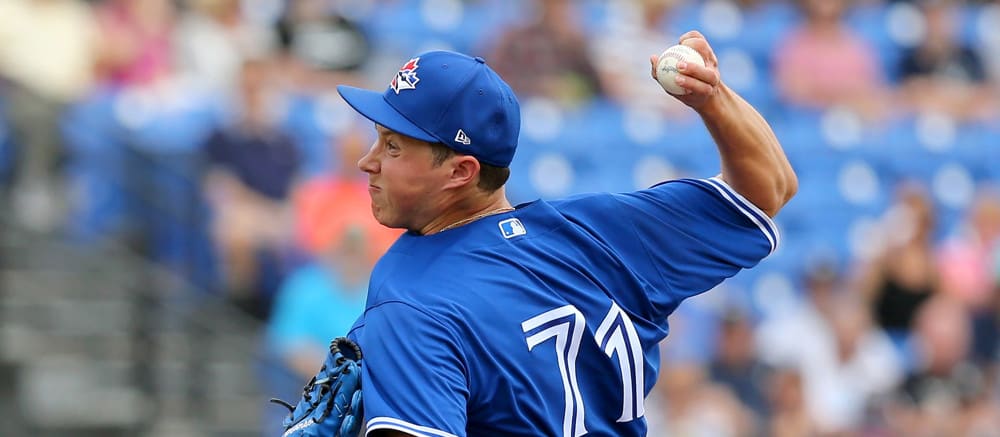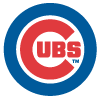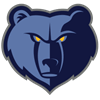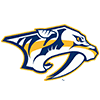Okay, I guess it hasn't been THAT long, but I think everyone will agree, it has certainly been strange. We are well into September, and at least in my mind, I have to remind myself this isn't mid-May. Injuries, probably because of a combination of factors including a compressed schedule and a lack of normal preparation time before the season began, have been far more prominent than in any season I can remember. That has proven to be perhaps the biggest challenge to fantasy owners. And, beyond the actual injuries, the impact on game preparedness among reportedly healthy pitchers has been very difficult to predict. Obviously, even though MLB is certainly to be commended on very effectively controlling COVID-19, there have been a handful of outbreaks that have magnified the problems related to preparation and scheduling. But, that's just the tip of the 2020 iceberg. What changes can we expect to see in future seasons?
Seven-inning doubleheaders, universal designated hitters and accelerated extra innings: So many things have changed as a result of this crazy season. It will be interesting to see how many of the changes will stick around for future "normal" seasons. Of course that assumes there will be a normal season in 2021 and beyond.
I haven't had a problem with seven-inning doubleheader games. From a strictly pitching-focused perspective, the shorter games will often make it unnecessary to use fringy relief pitchers who probably shouldn't be pitching at the major league level anyway. Your starter goes five
Okay, I guess it hasn't been THAT long, but I think everyone will agree, it has certainly been strange. We are well into September, and at least in my mind, I have to remind myself this isn't mid-May. Injuries, probably because of a combination of factors including a compressed schedule and a lack of normal preparation time before the season began, have been far more prominent than in any season I can remember. That has proven to be perhaps the biggest challenge to fantasy owners. And, beyond the actual injuries, the impact on game preparedness among reportedly healthy pitchers has been very difficult to predict. Obviously, even though MLB is certainly to be commended on very effectively controlling COVID-19, there have been a handful of outbreaks that have magnified the problems related to preparation and scheduling. But, that's just the tip of the 2020 iceberg. What changes can we expect to see in future seasons?
Seven-inning doubleheaders, universal designated hitters and accelerated extra innings: So many things have changed as a result of this crazy season. It will be interesting to see how many of the changes will stick around for future "normal" seasons. Of course that assumes there will be a normal season in 2021 and beyond.
I haven't had a problem with seven-inning doubleheader games. From a strictly pitching-focused perspective, the shorter games will often make it unnecessary to use fringy relief pitchers who probably shouldn't be pitching at the major league level anyway. Your starter goes five or six, followed by a key set-up guy and/or the closer. I can live with that. However, unless scheduling changes in future full seasons, I'm not sure a handful of seven-inning games is very practical. Maybe there will be more scheduled doubleheaders allowing for more off days? I really doubt that will happen.
As a former pitcher who could hit a ball a long way on the extremely rare occasions I actually got the bat on the ball, I have mixed feelings. I guess I lean toward traditional baseball. I like the managerial decisions. Should I lift my starter for a pinch hitter, we got a guy on so my pitcher can bunt him over, or is this the best time for a double switch? I like that aspect of the game. Of course I liked the idea of a theoretically easy out when facing the opposing pitcher. That said, I also understand having hitters hit, and the opportunity the DH provides to keep another player, possibly an aging star, employed full time. I think it's likely the DH becomes part of both leagues going forward.
And then there's the runner on second base at the beginning of each frame in extra innings. I hate it. It's that traditionalist thing again, but it also just doesn't seem right. A solid reliever comes on in the tenth inning. He induces a weak groundball to the right side of the infield, moving the runner to third, then a medium deep flyball allows the runner to score, before he strikes out the next hitter. A very strong outing. But, a strong outing resulting in a loss. At least he doesn't get charged with a run allowed, but he was not rewarded for doing what would otherwise be commended as an excellent outing. I really hope they do away with this one.
I didn't see that coming: I really try to anticipate. Changes in roles, improvements or declines. Teams (and individual players) ready to surge, or conversely, ready for a plunge. It's a huge part of fantasy baseball. Well, I have to admit, there were some major surprises I simply didn't see coming this year. For example:
- I expected a few streaks and slumps that could be magnified over such a short season. However, I underestimated some pretty weak teams, on paper, like Baltimore and Miami riding very surprising streaks to possible playoff berths, while teams like Washington and Cincinnati slumped right out of the picture. There simply aren't enough games for talent levels to normalize.
- The gap between being "game ready" and "still preparing" has been far bigger than I expected. I knew some would need a little more time, but I have seen a lot of pitchers who looked to be in midseason form while others lacked velocity, command and consistency much like you would expect to see in March. To make matters worse, I couldn't say which were which without seeing them.
- If you lose Corey Kluber, Trevor Bauer and Mike Clevinger, it would not be surprising to see a dip in the standings, but the Indians have quietly become a builder of quality pitching staffs. Guys like Aaron Civale and Zach Plesac have stepped in and stepped up. Keep that kind of developmental success in mind when evaluating pitchers expected to be in their rotation.
- Conversely, the Mets lost Noah Syndergaard and Marcus Stroman. Without them, and coupled with a season-long bullpen train wreck, they couldn't plug the holes, and 2020 has become a "wait until next year" season. Again, consistent organizational successes and failures can be very helpful when setting your expectations for a pitcher who's supposed to fill a key role in the coming season.
Every season there are unexpected performances – some on the good side of the ledger, and others on the bad. On the positive side, I anticipated a good year from Shane Bieber, but, wow. He has been simply unbelievable. I'll also mention the Astros' Framber Valdez. I liked his stuff, but thought it might take the lefty awhile to put it all together. On the negative side, the disaster in the dessert has to be near the top of the list. Madison Bumgarner hasn't been healthy, Robbie Ray (now with Toronto) somehow wandered further out of sync, and Luke Weaver has again been the definition of inconsistency. I expected solid years from all of them.
The year of the blue-chip prospect: I'm always on the lookout for pitcher who could fall under this heading. Pretty simple really, it amounts to Value 101, and that's the way to win fantasy leagues. And, the best young ones often offer incredibly high upside.
I'd have to say this year has surpassed all others in the arrivals of top-shelf pitching prospects. With no minor league season, teams just couldn't bypass a year of development for their best young arms. Not surprisingly, there were ups and downs as these guys did on-the-job training, but we got to see glimpses of what could be very bright futures for some really talented pitchers.
At the top of my list is Toronto's Nate Pearson. He's got a huge arm with all the tools. He's still developing his secondary stuff, and I hope the flexor strain issues aren't an early warning sign of elbow surgery in his future, but he's an ace in the making. Miami's Sixto Sanchez really caught my attention, too. I always liked his future possibilities, but his pitches this season were even more impressive than in the past. With him it's all about movement, and that stood out in his early showing. Next up on my target list is Atlanta's Ian Anderson. I had him ranked higher than do most analysts, and I was impressed beyond my own expectations with his early performance. I think he is destined to join Mike Soroka at the top of the Braves rotation. Remember to give a little extra credit to pitchers in organizations displaying an ability to bring young pitchers along. Cleveland's Triston McKenzie falls into that category. Finally, although he still has some work to do, the Tigers' Casey Mize certainly has the raw ability to be a good one. Keep monitoring these guys, and roster them if you can in keeper leagues.
My dream World Series: I do want to add just one more fun exercise to this week's Musings. We play fantasy baseball, so being able to fantasize seems viable. I'd like to offer my matchup for an exciting World Series.
Everyone knows my fondness for youthful exuberance, so how about the San Diego Padres and Chicago White Sox meeting this fall? Both rosters are overflowing with ultra-high ceiling kids, both on the mound and in the field. The Padres have generated the nickname "Slam" Diego, based on their proclivity for hitting home runs with the bases full. Currently 13 teams have yet to hit even one grand slam this season. The Padres have hit seven. The White Sox lead the league in most hitting categories – batting average, on base percentage, slugging percentage and runs per game (there are more, but you get the idea). Plus, they both have some very exciting young pitchers. These teams define what baseball is all about. They win a lot and they have fun doing it.
So here are a couple dream matchups. Yes, I do also watch hitters. Perhaps my favorite kid hitter is Luis Robert. The guy destroys baseballs. Who wins a battle between Robert and the Padres' electric arm Dinelson Lamet? Or let's flip the coin over. How about a confrontation between Lucas Giolito and Fernando Tatis?
Less than three weeks left in the regular season: It seems like 2020 just got off to a respectable start, and here we are, with less than three weeks left in the regular season. That means Mound Musings will be wrapping up after just a couple more columns.
Traditionally – there's that word again – I wrap up each season with my awards issue a couple weeks before the season ends, and then the final column of the year is the Kids on Parade recap. I'm going to follow that tradition even though the shorter season hasn't produced the typical award winner statistics. Still, there have been several standout performances worthy of recognition. And, perhaps even more challenging, the lack of a minor league season has made it more difficult to track the progress of pitchers who have yet to find their way to the big leagues. Thankfully, an unprecedented number of high ceiling pitching prospects have made their debuts, and we'll focus on them. As always, your questions and comments are welcome! Check in next week to see who I have decided to honor with a prestigious Musings award.
Some Notable Rotation Ramblings:
- I watched some of Jose Urena's first 2020 start for the Marlins earlier this week. I thought he might be a decent sleeper this season, but a bout with coronavirus set him back. He has good stuff to be sure, but the rust was evident as he fought to hit his spots. Put him on the list to consider next spring.
- Houston's Justin Verlander continues to work his way back into game shape, but the clock is ticking. I would really like to see him in actual game action before the playoffs, but his value to a fantasy team could be limited assuming he could be on a restricted pitch count initially. Give him at least one start to see.
- What a difference a little run support makes. You may not be aware that over his career, Nationals ace Max Scherzer is an amazing 109-0 in games where his team has provided him with five or more runs with which to work. Obviously you should win some games with that kind of support, but no losses is incredible.
- The Cinderella dance may be close to the end for Minnesota's Randy Dobnak. He was spanked for five runs and couldn't make it out of the third inning in his last start. Like many starters with pedestrian skills, the league is catching up with him, and with the Twins staff getting healthy, he could be headed to the bullpen.
- Diamondbacks righthander Merrill Kelly is scheduled to undergo thoracic outlet syndrome surgery. He looked pretty good compiling a 2.59 ERA across five starts for Arizona, but this announcement casts a dark cloud over his future. I'm no doctor, but it seems pitchers have a hard time dealing with this procedure.
- It was pretty painful watching Taijuan Walker in his second start for Toronto. He allowed just one run, but he was constantly in trouble through his four innings of work. He walked six and needed 88 pitches to cover those four innings. He has very good stuff if he could just lock in a release point. Stay tuned.
Endgame Odyssey:
I believe Yoshihisa Hirano is the primary closer in Seattle, but he's technically sharing the duties with Yohan Ramirez. Hirano missed considerable time and is not fully back to game shape, so the Mariners are avoiding using him on back-to-back days. Brad Hand has been on quite a roll in Cleveland. Despite a dip in fastball velocity, he hasn't allowed a run since July as he typically finishes the work begun by their rotation. The Giants don't really have a closer, but they've been playing well, which translates into save chances. If I was hoping for an occasional save, I'd probably go with Tony Watson. He's a solid reliever and is the least likely to hurt your peripherals like ERA and WHIP. Meanwhile, back in Boston, Matt Barnes logged blown save No. 3 while inflating his ERA to a robust 5.40 on the year. I'd like to recommend an alternative, but I've looked and looked, and Barnes still appears to be the best option. Ouch.






































